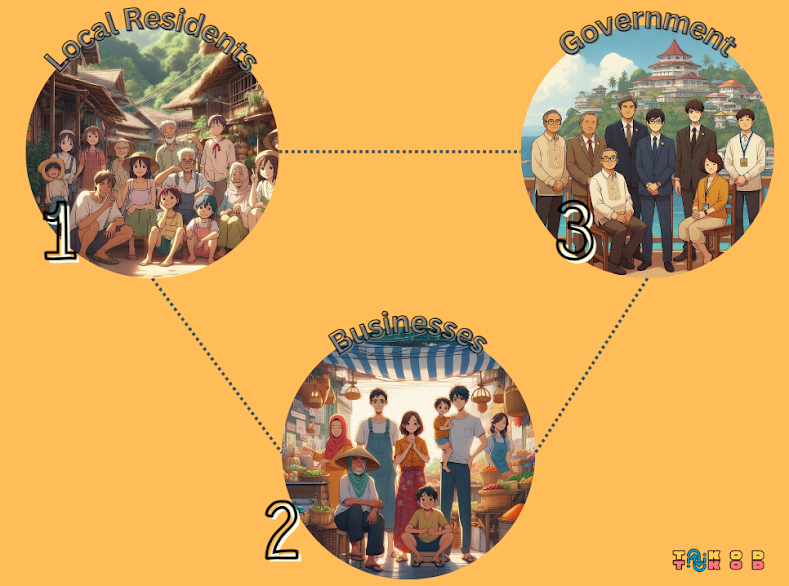
Participatory planning represents a transformative approach in urban design and development, prioritizing the involvement of community members and other stakeholders in the decision-making process. This method contrasts sharply with traditional top-down planning strategies, aiming instead to democratize urban planning and ensure that the voices of those directly impacted are heard and incorporated. By fostering greater community involvement, participatory planning can lead to more equitable, sustainable, and livable urban environments. This comprehensive article explores the principles, methods, challenges, and opportunities of participatory planning, providing a thorough understanding of its significance and applications.
What is Participatory Planning?

Participatory planning is a collaborative process where stakeholders, including local residents, business owners, and government officials, work together to make decisions about urban development. This approach seeks to democratize the planning process by involving community members, ensuring that urban development reflects the needs and desires of the people who live there. This inclusive method helps create more sustainable and livable urban environments.
At its core, participatory planning is about giving power back to the people. It is a shift from the traditional planning model, which often involves experts making decisions in isolation, towards a more inclusive model where the community has a say in the future of their neighborhoods. This approach recognizes that local residents have valuable insights and knowledge about their own communities that can lead to better and more effective urban planning outcomes.
Furthermore, participatory planning helps to build stronger and more resilient communities. By involving residents in the planning process, it fosters a sense of ownership and responsibility towards their environment. This can lead to increased civic engagement and social cohesion, as people come together to work towards common goals. Ultimately, participatory planning aims to create urban spaces that are not only functional and efficient but also vibrant and reflective of the community's unique character and needs.
Theoretical Foundations
Historical Context

The concept of participatory planning has its roots in the social and political movements of the 1960s and 1970s. During this period, there was a growing awareness of the limitations of traditional top-down planning approaches, which often failed to address the needs of marginalized and disadvantaged communities. The civil rights movement, environmental activism, and other social justice movements of this era highlighted the need for more inclusive and democratic decision-making processes.
In response to these societal shifts, participatory planning emerged as a way to give communities a greater voice in shaping their own environments. This approach was seen as a way to address the inequities and injustices that had been perpetuated by traditional planning methods. By involving residents in the planning process, participatory planning sought to create more equitable and just urban environments.
Over the decades, participatory planning has evolved and adapted to changing social, political, and economic contexts. It has been embraced by planners and policymakers around the world as a way to address the complex challenges of urbanization and to create more sustainable and resilient cities. Today, participatory planning is recognized as a vital tool for promoting social inclusion, fostering community engagement, and ensuring that urban development is responsive to the needs of all residents.
Key Theories and Models

One of the most influential theories in the field of participatory planning is Sherry Arnstein's "Ladder of Citizen Participation," first published in 1969. Arnstein's model outlines eight levels of participation, ranging from manipulation and therapy (non-participation) to informing, consultation, placation, partnership, delegated power, and citizen control (degrees of citizen power). This model highlights the varying degrees of power and influence that citizens can have in the planning process, emphasizing the importance of genuine collaboration and shared decision-making.
Arnstein's ladder has been widely used as a framework for understanding and evaluating participatory processes. It underscores the need to move beyond tokenism and to ensure that citizens have meaningful opportunities to influence planning decisions. By recognizing the different levels of participation, planners can design processes that empower residents and promote more democratic and inclusive planning practices.
Another key theoretical framework is John Friedmann's concept of "transactive planning," which emphasizes the importance of dialogue and mutual learning between planners and community members. Friedmann argued that planning should be a collaborative process, where both planners and residents contribute their knowledge and expertise. This approach values the experiential knowledge of residents and seeks to integrate it with professional planning expertise to create more effective and responsive plans.
More recent theories have built on these foundational concepts, incorporating ideas from participatory democracy, deliberative democracy, and social learning. These theories emphasize the importance of inclusive and transparent decision-making processes, where diverse perspectives are valued and power is shared. By grounding participatory planning in these theoretical frameworks, planners can design processes that are more equitable, just, and responsive to the needs of all community members.
Methods and Tools of Participatory Planning
Levels of Participation

Participation in planning can occur at various levels, each with different degrees of power and influence for community members. Understanding these levels is crucial for designing effective participatory processes that truly empower residents.
- Informing: At this level, the goal is to provide the public with information to help them understand the issues, alternatives, and solutions. This is a one-way communication process, where planners disseminate information to the public through newsletters, websites, public notices, and other means. While this level of participation is essential for transparency, it does not involve direct input or feedback from the community.
- Consulting: Consulting involves gathering feedback from the public on analysis, alternatives, and decisions. This level of participation is more interactive than informing, as it seeks to gather input from community members through surveys, questionnaires, public hearings, and focus groups. While consultation allows residents to express their opinions, the final decision-making power still rests with the planners.
- Involving: Involving the public means working directly with them throughout the planning process to ensure that their concerns and aspirations are consistently understood and considered. This level of participation includes activities such as workshops, charrettes, and advisory committees, where community members actively engage in discussions and contribute to the development of plans and proposals.
- Collaborating: Collaboration involves partnering with the public in each aspect of the decision, including the development of alternatives and the identification of the preferred solution. This level of participation is characterized by joint decision-making, where planners and community members work together as equal partners. Examples of collaborative activities include participatory budgeting, community planning boards, and co-design workshops.
- Empowering: At the highest level of participation, empowering involves placing final decision-making power in the hands of the public. This level of participation is achieved through mechanisms such as referendums, citizen juries, and community-led planning initiatives. Empowerment ensures that community members have the authority to make decisions that directly affect their lives and environments.
By recognizing and understanding these different levels of participation, planners can design processes that are more inclusive and effective. The goal is to move beyond mere consultation towards deeper levels of involvement, collaboration, and empowerment, where community members have a meaningful and influential role in shaping their urban environments.
Techniques and Tools
Participatory planning employs a wide range of techniques and tools to engage stakeholders effectively and gather diverse inputs. These methods are designed to facilitate communication, build trust, and ensure that all voices are heard.
- Public Meetings and Workshops: Public meetings and workshops are interactive sessions where community members can voice their opinions, ask questions, and contribute to the planning process. These events provide a platform for dialogue and collaboration, allowing residents to share their insights and ideas directly with planners. Workshops often involve activities such as brainstorming sessions, visioning exercises, and mapping, which help gather a wide range of inputs and foster creative solutions.
- Surveys and Questionnaires: Surveys and questionnaires are valuable tools for collecting quantitative data on community preferences, needs, and concerns. These instruments can be distributed in various formats, including online, by mail, or in person. Surveys are particularly useful for reaching a broad audience and gathering statistical data that can inform planning decisions. They can include a mix of closed-ended questions for quantitative analysis and open-ended questions for qualitative insights.
- Focus Groups: Focus groups involve small, diverse groups of community members engaged in detailed discussions to uncover deeper insights into community needs and preferences. These facilitated sessions encourage participants to share their perspectives, experiences, and ideas in a more intimate and interactive setting. Focus groups can be particularly effective for exploring complex issues, generating rich qualitative data, and understanding the nuances of community concerns.
- Digital Platforms: Digital platforms and social media tools offer new opportunities for broadening engagement and making participatory planning more accessible. Online forums, interactive websites, and social media channels can facilitate real-time feedback and engagement, reaching a wider and more diverse audience. Digital tools such as participatory GIS (Geographic Information Systems) allow residents to contribute local knowledge and spatial data, enhancing the accuracy and relevance of planning efforts.
- Participatory GIS: Participatory GIS involves the use of geographic information systems to incorporate local knowledge into spatial planning. This tool allows community members to map out their neighborhoods, identify key issues, and propose solutions. Participatory GIS can be used in various stages of the planning process, from data collection and analysis to scenario development and decision-making. By integrating local knowledge with spatial data, participatory GIS helps create more contextually relevant and responsive plans.
These techniques and tools are essential for creating inclusive and effective participatory planning processes. By employing a mix of methods, planners can engage a diverse array of stakeholders, gather comprehensive data, and ensure that community voices are heard and considered in decision-making.
